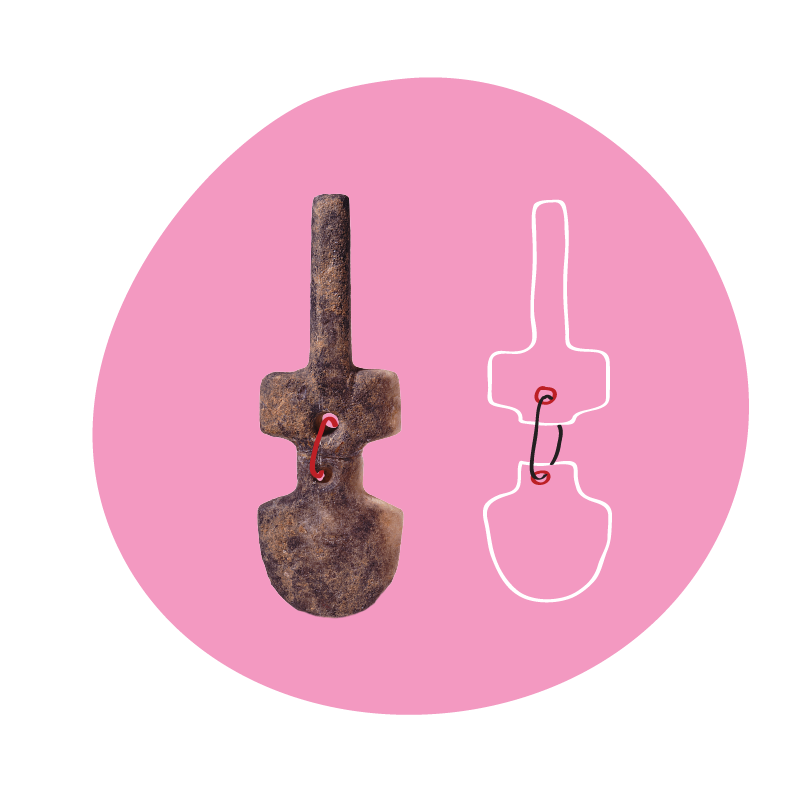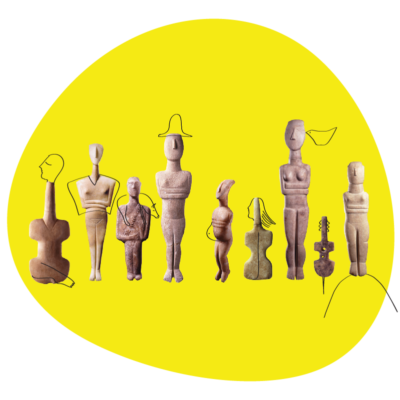What were they made of?

How were the figurines made?
To start with, the artisan selects a piece of marble and works it with stone hammers until he obtains the basic shape of the figurine.
➜ With a stone hammer, they removed the larger pieces of the marble.
➜ Using emery, obsidian and the chisel, they carved the details.
➜They smoothed it out with the pumice stone… and it was ready!

What tools did they use?
Rocks found in nature were used, like emery, obsidian and pumice, available in abundance in the Cyclades right up until today. In that era, working the marble was also done with bronze tools, primarily chisels.

What happened when they broke?
They would be repaired according to the damage. Because, even broken, the figurines were valuable. In order to put back together the violin-shape we see here, the artist pierced holes in two separate parts and attached them back together, using a strip of leather.
SUGGESTIONS FOR CLASS WORK:
The children clearly cannot be asked to carve a figurine from marble, but it is desirable that they should gain some sense of the “subtractive process” on which marble-carving is based.
➜ To this end, they could use soap (white, hard soap is the most suitable) to make their own figurine.
➜ White synthetic clay is another material that is easy to use.





